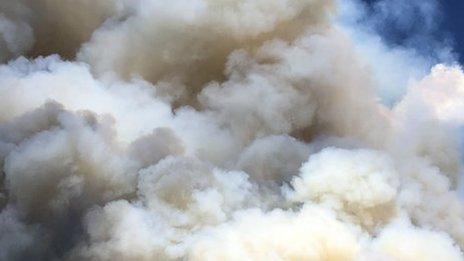Perth bushfire: Evacuations as dozens of homes destroyed
- Published
Helicopter footage shows the bushfire's trail of destruction north of the city
Hundreds of Australians have fled to evacuation centres as a bushfire on the outskirts of the locked-down city of Perth continues to grow and threaten communities.
The blaze - the largest the city has seen in years - has burnt through 9,000 hectares, destroying 71 homes. Six firefighters have suffered injuries.
Fire services were expecting further challenging conditions on Wednesday.
They urged communities near the blaze to prepare to leave or take shelter.
The Western Australia (WA) capital is in the middle of a coronavirus lockdown, complicating safety advice messages for Perth's two million residents.
State officials have urged people to prioritise their immediate safety over the virus risk, which is considered very low. Perth entered a five-day lockdown - due to end Friday - over just one locally acquired infection.
"The important thing is the preservation of life. So, if you're quarantining and you're required to evacuate, you should just evacuate," said WA fire commissioner Darren Klemm.
Officials have urged people to wear masks and self-isolate where possible at evacuation centres.
Smoke over Perth
The Wooroloo fire, which started on Monday, has a 100km (62 miles) perimeter and is burning about 30km (18.5 miles) east of central Perth.
Strong winds on Tuesday caused it to spread rapidly and made it "near impossible" for firefighters to suppress, official said. Embers were reported 5km ahead of the firefront.

The winds were forecast to return to highs of 75km/h later on Wednesday, potentially driving the already "erratic" blaze to new populated areas.
Evacuation warnings have been issued for communities north and north-east of Perth - including the suburbs of Shady Hills, Bullsbrook, The Vines and Aveley.
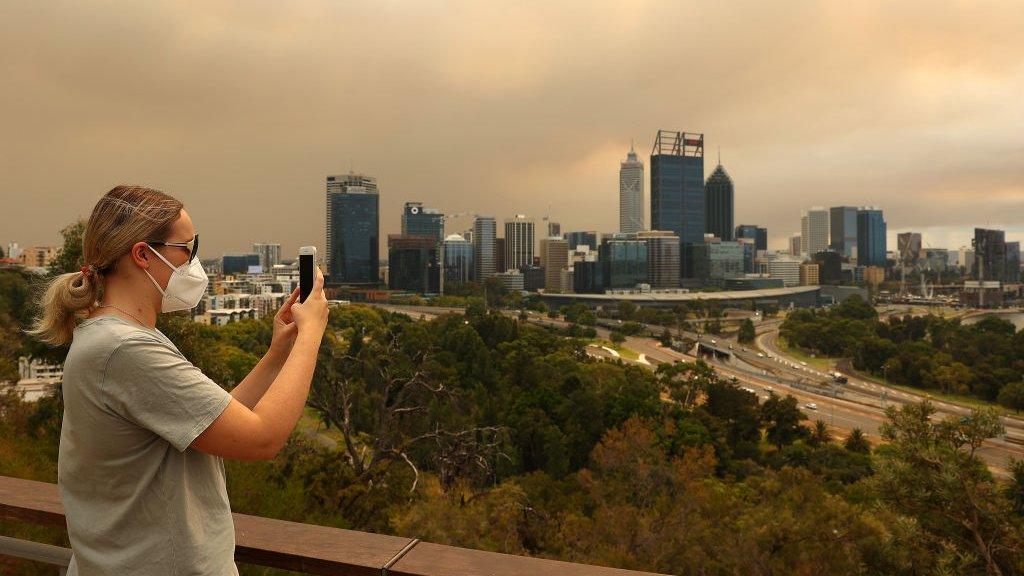
The fire's smoke has blanketed Perth affecting air quality
On Tuesday, Perth was also smothered in smoke which turned skies a hazy orange and at times rained ash over suburban homes.
Parts of the city were rated the worst in Australia for air quality. Officials issued public health warnings urging people to stay inside and avoid inhaling the smoke.
Perth has endured days of temperatures over 30C (86F) as well as extended dry conditions.
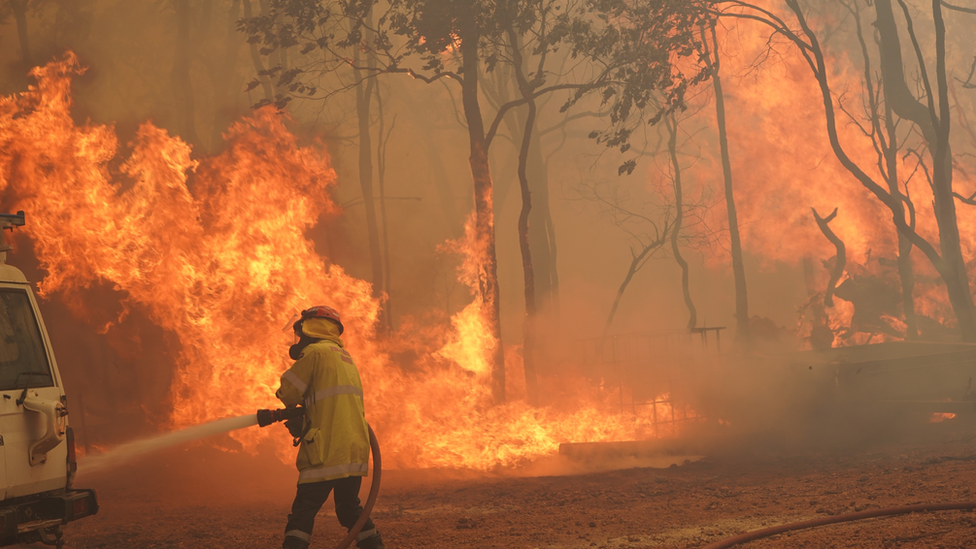
Firefighters battling the blaze in the suburb of Brigadoon on Tuesday
On Wednesday, WA Premier Mark McGowan said the state faced an unprecedented situation: "A full lockdown and raging bushfires. It will test us all."
Residents not near the fire have been urged to follow health orders and stay at home.
The city entered a snap lockdown on Sunday after Western Australia's first local infection in 10 months. No new cases have been reported since then.
Fire danger moved to Western Australia this summer
Australia suffered extreme bushfires in its most-populated eastern states last summer, but those areas have largely experienced cooler and wetter conditions this year - influenced by a La Nina weather phenomenon.
Authorities had predicted that the other side of the country - Western Australia - would see the greatest fire danger this summer.
"Western Australia has largely missed out on the rainfall in 2020 and conditions are very dry, with parts of the south and south west coasts expecting above normal fire conditions through summer," warned the Bushfires and Natural Hazards Central Resource Centre last December., external
On Tuesday, deputy fire commissioner Craig Waters said the area had not seen such large fires historically but "in the last few years, we have seen increased fire behaviour with rapid escalation overnight".
"The changing climate... and moisture deficit in the soil is impacting how the fire behaves," he said.
Australia has warmed on average by 1.4C since national records began in 1910, according to its science and weather agencies.
That's led to an increase in the number of extreme heat events, as well as increased fire danger days.
- Published31 January 2021

- Published8 January 2021
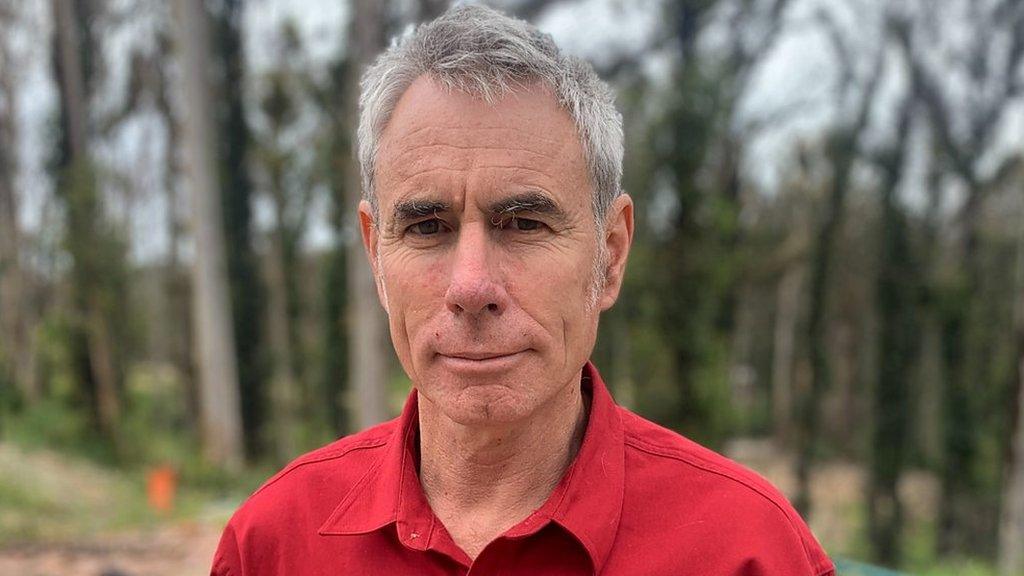
- Published2 February 2021
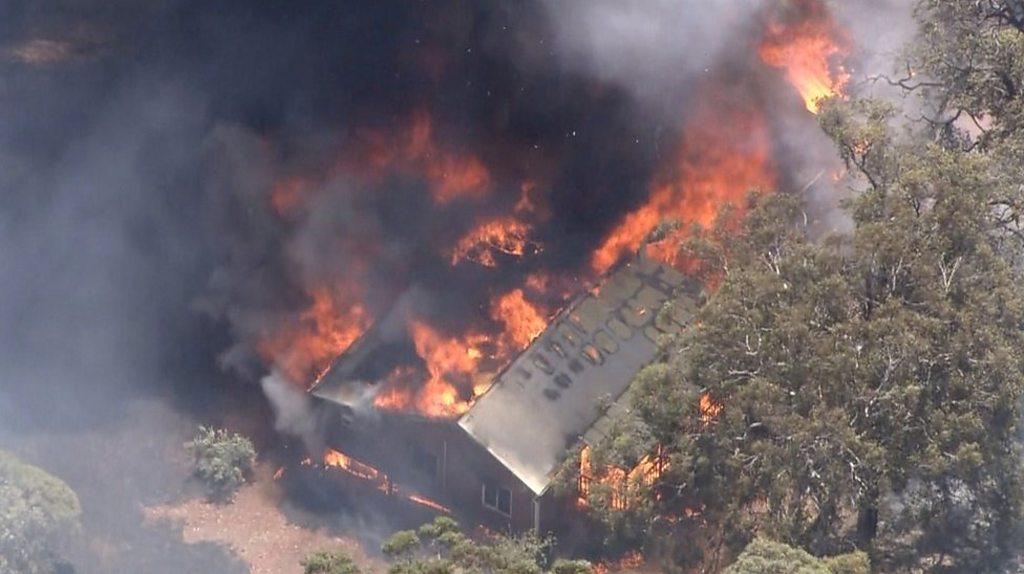
- Published30 October 2020
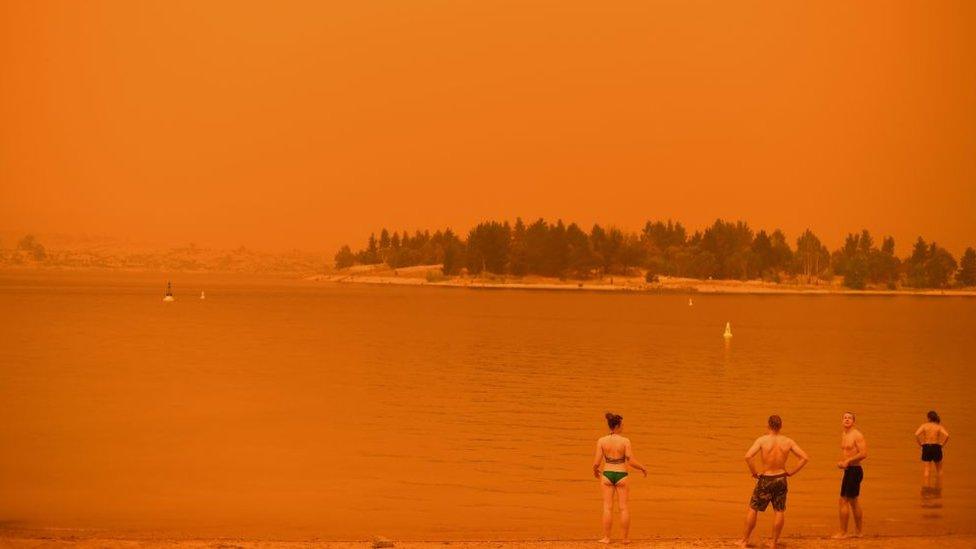
- Published18 December 2020
